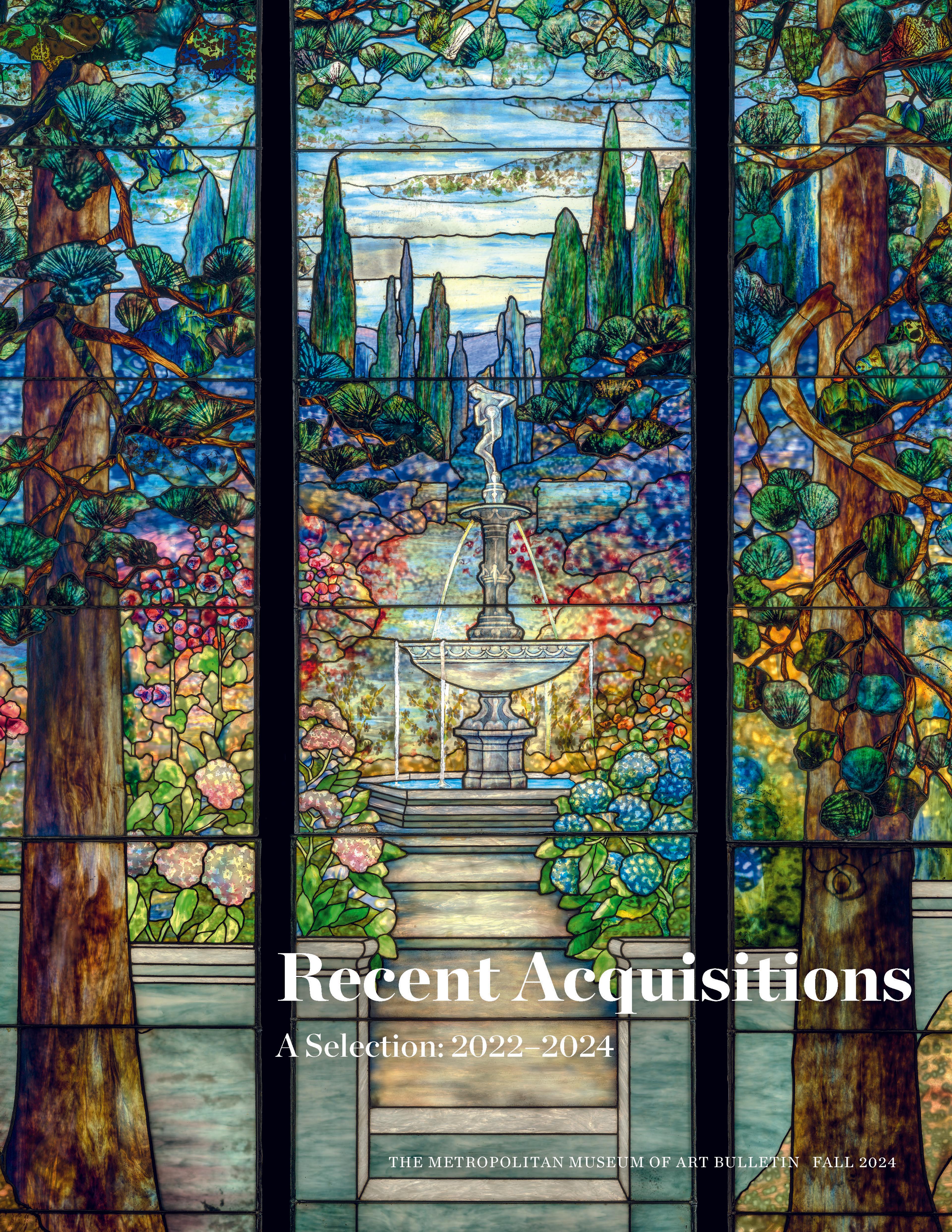The Bodhisattva Jizō
Jizō is an enlightened being who, out of compassion, leads others along the Buddhist path. He is best known for rescuing souls from hell and protecting children. In this sculpture, Jizō is portrayed as a youthful monk with a shaved head and a patchwork surplice layered over his robe. He wields a monk’s staff in his right hand—which he rattles to awaken humans from their delusions—while in his left he holds a jewel of wisdom that grants all wishes. Jizō’s long earlobes and the urna on his forehead symbolize his enlightened state. This sculpture, one of only three surviving works bearing the name of the sculptor Intan, is signed on one of the wood tenons used to slot the bodhisattva’s feet into the lotus base.
Artwork Details
- 院湛作 地蔵菩薩立像
- Title:The Bodhisattva Jizō
- Artist:Intan (Japanese, active 13th century)
- Period:Kamakura period (1185–1333)
- Date:1291
- Culture:Japan
- Medium:Japanese cypress wood (hinoki) with polychrome pigments, gold paint (kindei), cut gold leaf (kirikane), and rock-crystal eyes
- Dimensions:H (with pedestal) 53 1/2 in. (135.9 cm); W. 11 in. (27.9 cm)
- Classification:Sculpture
- Credit Line:Purchase, Florence and Herbert Irving Acquisitions Fund for Asian Art, Florence and Herbert Irving Acquisitions Fund, by exchange, The Miriam and Ira D. Wallach Foundation Fund, Brooke Russell Astor Bequest, and Fletcher Fund, 2023
- Object Number:2023.640a–c
- Curatorial Department: Asian Art
More Artwork
Research Resources
The Met provides unparalleled resources for research and welcomes an international community of students and scholars. The Met's Open Access API is where creators and researchers can connect to the The Met collection. Open Access data and public domain images are available for unrestricted commercial and noncommercial use without permission or fee.
To request images under copyright and other restrictions, please use this Image Request form.
Feedback
We continue to research and examine historical and cultural context for objects in The Met collection. If you have comments or questions about this object record, please contact us using the form below. The Museum looks forward to receiving your comments.
